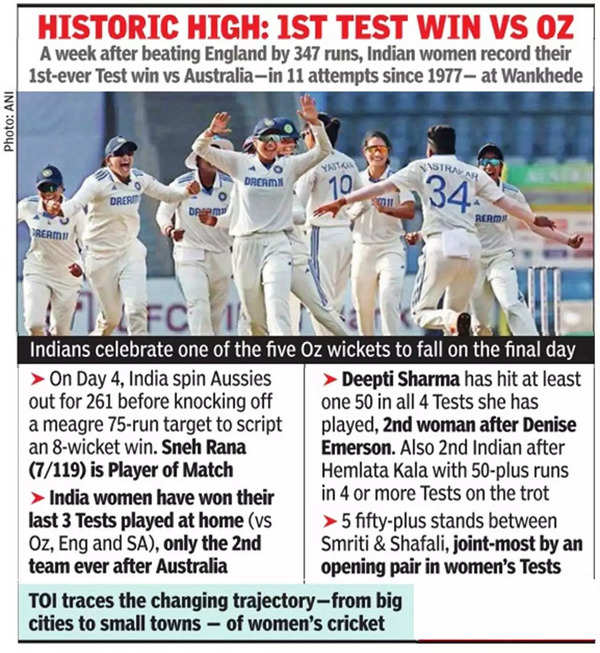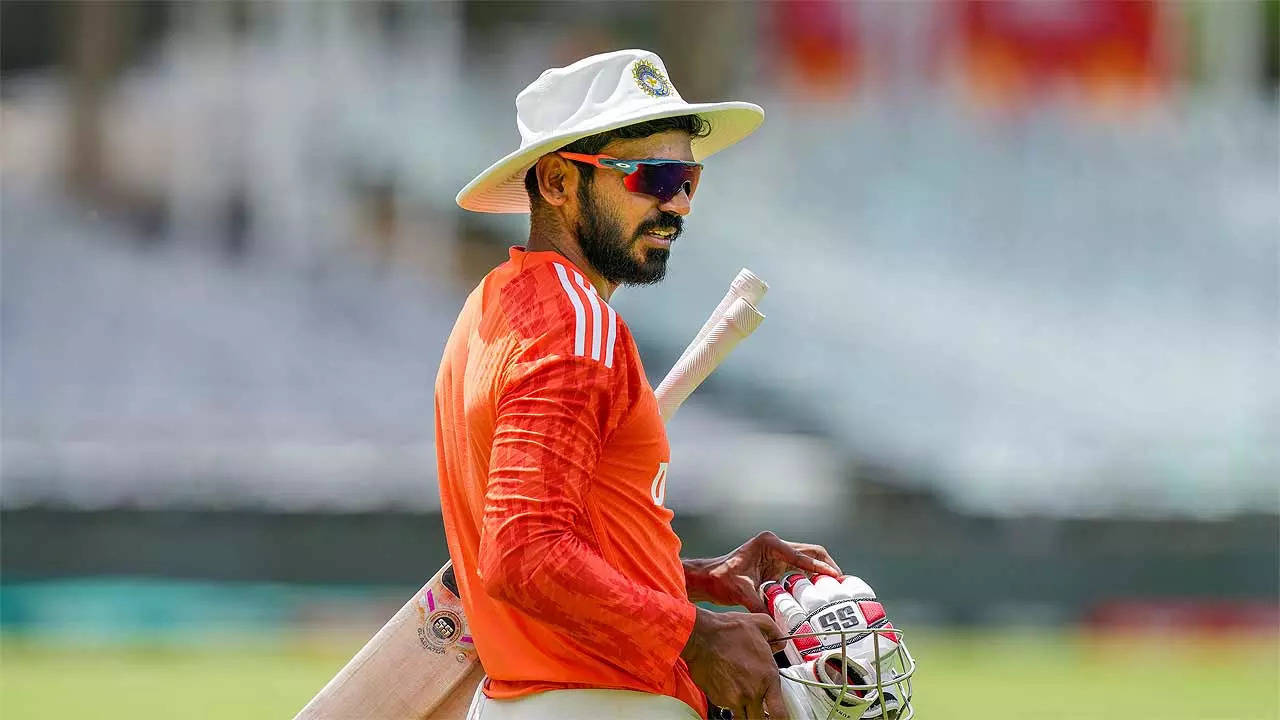India’s women’s cricket team made history on Sunday with their first-ever Test victory over Australia. The match took place at Mumbai’s Wankhede stadium, marking a significant moment for Indian women’s cricket. The team, led by captain Harmanpreet Kaur, achieved an impressive eight-wicket win, ending Australia’s dominance in Tests between the two countries.
The journey to this historic win began nearly 47 years ago in 1977, when India’s women’s team, captained by Shantha Rangaswamy, faced off against Australia in their first-ever Test match. Unfortunately, the visitors lost by 147 runs on that occasion.
The recent victory reflects the tremendous progress and change in the women’s cricket team’s geographical base over the years. In the 1970s, most of Rangaswamy’s team hailed from cosmopolitan cities like Bombay (now Mumbai), Calcutta (now Kolkata), and Poona (now Pune). However, the current generation of women Test cricketers come from diverse backgrounds and regions across India.
Captain Harmanpreet Kaur hails from Moga, a small town in Punjab. She had to play alongside boys during her childhood as girls were not involved in cricket. Similarly, Shafali Verma from Rohtak disguised herself as a boy by cutting her hair short to be able to play with boys who were reluctant to include girls in their games.
Other players in the team also come from different parts of India. Richa Ghosh, who made her Test debut and played a crucial role in the victory, is from Siliguri, a town in North Bengal. Pooja Vastrakar, who contributed with both bat and ball, grew up in Shahdol, a hilly and forested district in Madhya Pradesh. The team’s talent extends across the country, with players like Smriti Mandhana from Sangli in Maharashtra, Sneh Rana from Dehradun, Renuka Singh from Shimla, and Deepti Sharma from Agra.
The changing landscape of women’s cricket in India is evident in the increasing number of aspiring girl cricketers from smaller towns and middle-class backgrounds. The emergence of the Women’s Premier League has further emphasized cricket as a pathway for upward economic and social mobility for women in the country.
The recent victory over Australia in the Test match is a significant milestone for Indian women’s cricket. It showcases the depth of talent that exists across India, with players from various regions contributing to the team’s success. The future looks promising for women’s cricket in the country, with more opportunities and recognition on the horizon.
In 1977, India’s women’s cricket team faced off against Australia in their first-ever Test match between the two countries, resulting in a loss for the Indian team. Nearly 47 years later, India’s women’s team, led by captain Harmanpreet Kaur, achieved their first-ever victory over Australia in Tests at Mumbai’s Wankhede stadium. This historic win signifies the changing landscape of the women’s cricket team, with players now hailing from various regions of India. The team’s success highlights the talent and potential that exists in India’s smaller towns and cities. With the Women’s Premier League becoming a reality, cricket is expected to provide more opportunities for upward economic and social mobility for women in the country.
Disclaimer: Only the headline and content of this report may have been reworked by Newsearay, staff; the rest of the content is auto-generated from a syndicated feed. The Article was originally published on Source link



